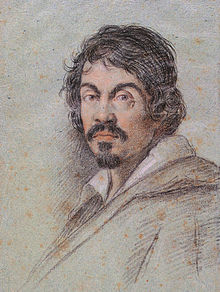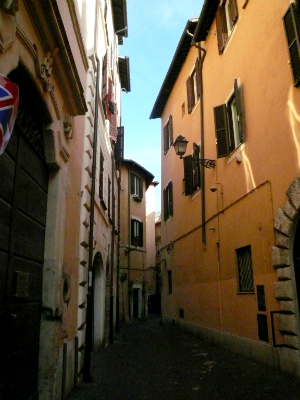By Claudio Assandri
As one moves across Rome’s Campo Marzio the cobblestones resonate with History at every step.
“Caravaggio was one of them”
As one moves across Rome’s Campo Marzio the cobblestones resonate with History at every step. Located in the heart of Reinaissance Rome, Campo Marzio takes its name from the ancient monumental parkland located just north of the 4th century b.C. Servian wall, ancient Rome’s defence at the time of the Republic. This was the Field of Mars, where the Roman ‘tribes’ gathered for assemblies and the youth trained. At the end of the 16th century Campo Marzio was a bustling and vast area filled with noble palaces, common housing buildings, myriads of artisan shops and innumerable vendors of foodstuff and wine. In the midst of all this, many Artists lived, worked, struggled and fought for ‘a place in the sun’. Caravaggio was one of them.

“Footsteps in my neighborhood”
My knowledge of Michelangelo Merisi, called da Caravaggio after his home-town near Milano, springs from my being born in Campo Marzio and having a scholar as a Father who took me often to the churches and museums that contain the masterpieces of this immense Artist. As an adult I researched his life and traced his footsteps in my neighborhood, consulted documents, walked the streets of his life and got to understand much better some important aspects of his dramatic permanence in Rome.
“It was a surprise …..”
It was a surprise, once I began researching, to find out that Caravaggio spent many months as a wagered painter in an assembly-line painting factory (a Bottega) owned by Giuseppe Cesari, the most succesful painter in Rome at the time. This was just in the next street from my house. Here Caravaggio painted almost exclusively flowers and fruits as other painters painted backgrounds and tapestries only to pass the canvas over to young Michelangelo to continue the image. Others filled in the remaining details: figures, furniture and other subjects. Giuseppe Cesari was too sharp and a shrewd businessman not to notice the talent of the young genius, and probably ‘kept him down’ and busy with minor tasks rather than to let him bloom and become a potentially dangerous competitor.

“Chasing pleasure and fame”
As the talented Artist broke finally free of his oppressive and ungenerous employer his Art began evolving as did his struggles to find means for a decent independant life. Divided between an immense visionary talent and a pronounced taste for night street-life, Caravaggio frequented Artists, Monsiniors, possible patrons, money-lenders, street thugs, men at arms, beautiful and intelligent courtisans, as well as the most humble and vulnerable humanity. In short, his Artistic vision followed along the turbolent path of a determined young man intent on chasing pleasure, fame, and, possibly, his own destruction.
End of part 1.
Campo Marzio, Rome. Photo by Claudio Assandri 2001.
Canestra di Frutta, 1596 ca. Milano, Pinacoteca Ambrosiana. (detail)
Portrait of Caravaggio by Ottavio Leoni, ca. 1614
